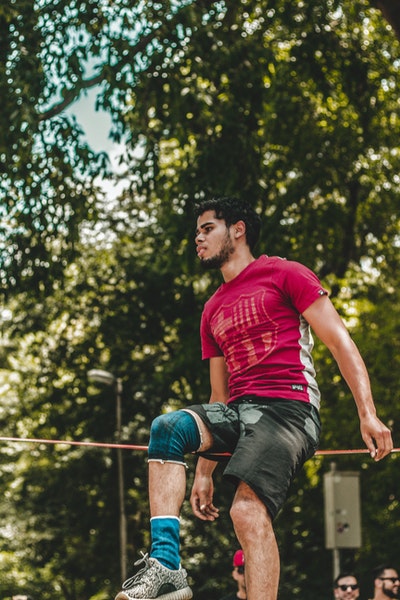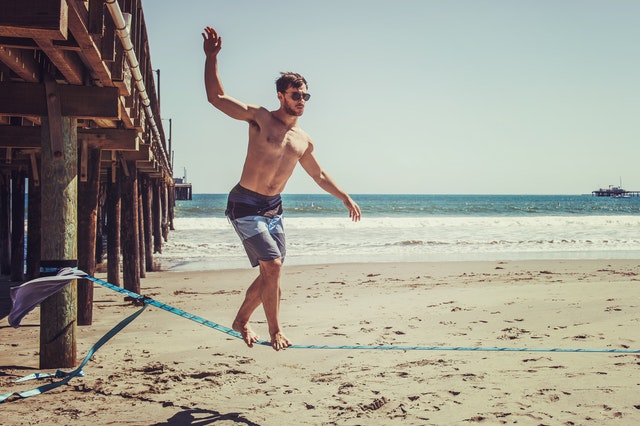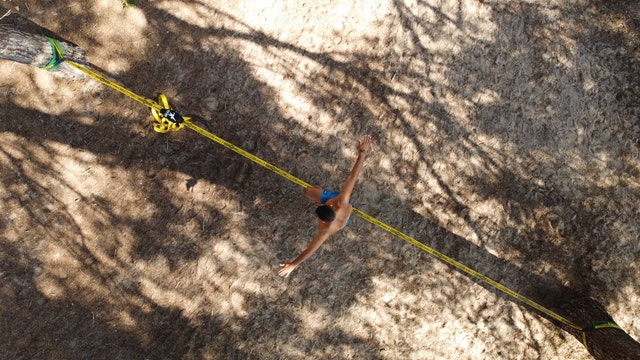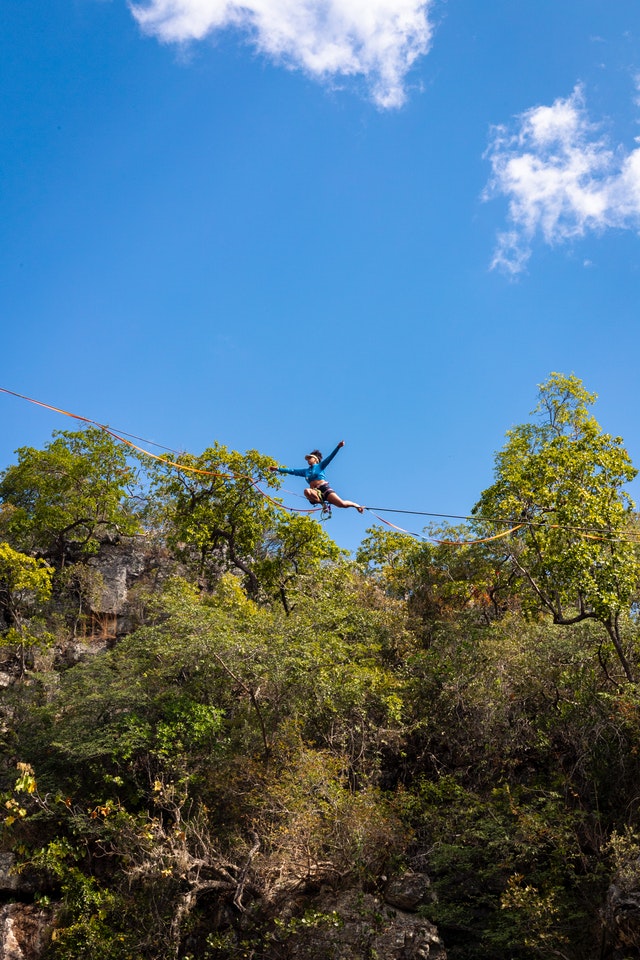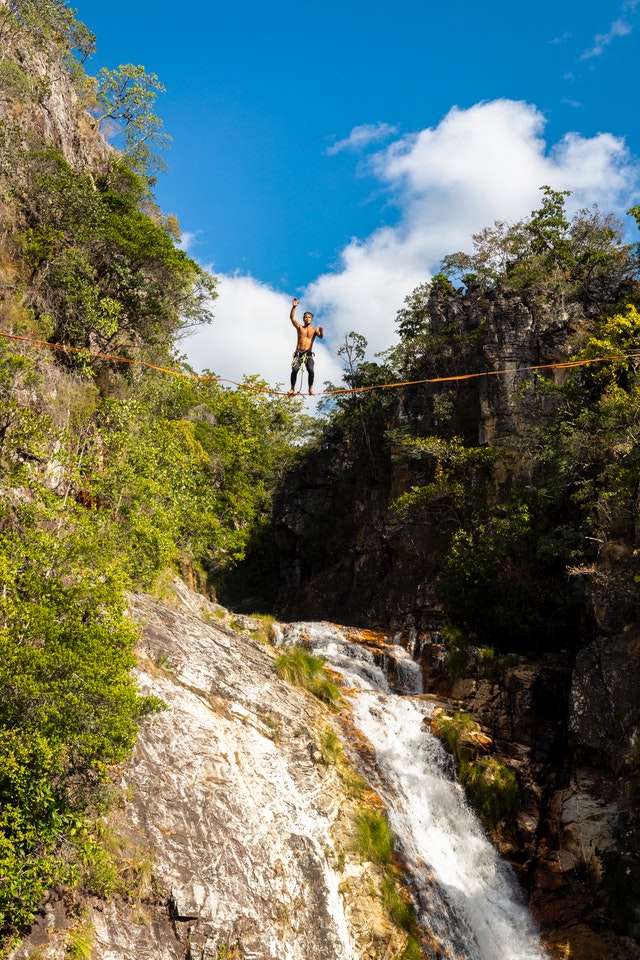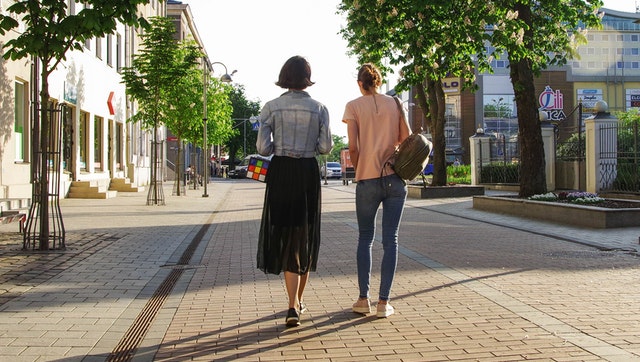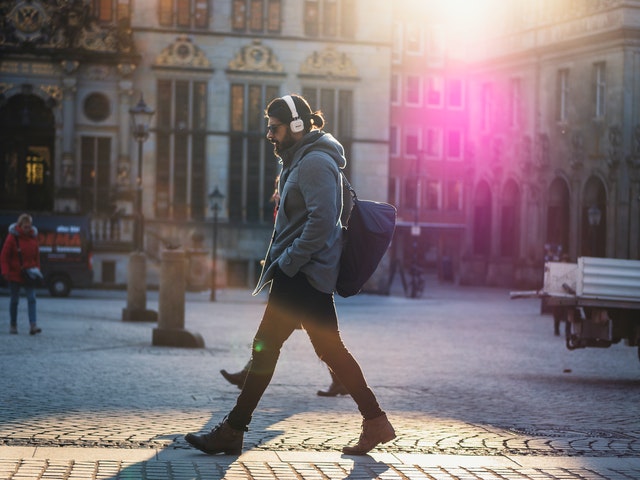An incredible good morning stretch makes my list of all-time top-ten best feelings. While the old-fashioned arms to the sky pose is a classic, of course, sometimes you just want to switch it up. When the urge for something new arises, wake up your senses with one of my x favorite morning stretches.
Child's pose
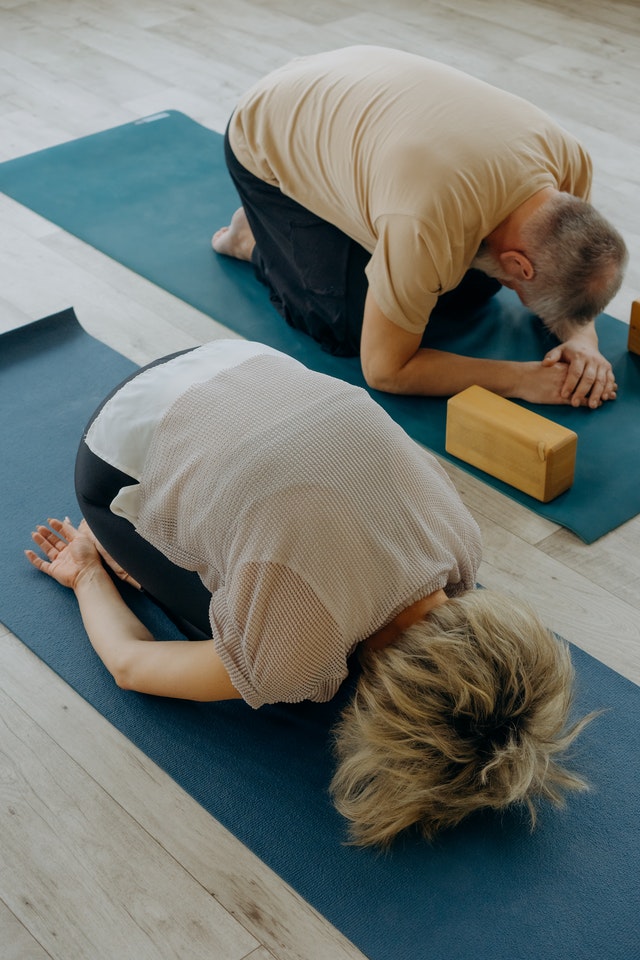
You can do this yoga resting pose on the floor with a blanket or mat. Start on your hands and knees, with knees aligned with your hips and big toes together. Lengthen your spine as you inhale, then tuck your chin to your chest as you rest your rear on your heels and exhale. Stretch your arms overhead, palms flat on the ground, and rest your forehead on the floor. Hold for five deep breaths to beat early morning fatigue and soothe any stiffness that's cropped up overnight.
Cat and cow pose
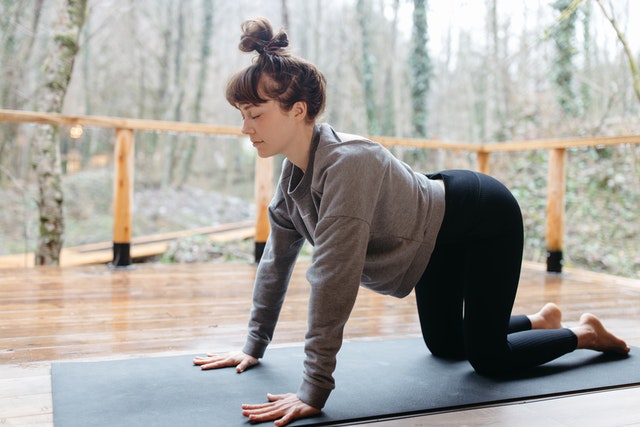
More of a flow than a stretch, cat and cow works wonders for the spine. Start on all fours on your mat or blanket with hands directly under your shoulders. As you breathe in, drop your torso down and lift your gaze to the sky. Raise your tailbone as you gently press your stomach toward the floor.
On the exhale, bring the belly back up and drop the chin. Round the back (think of a Halloween cat) as you tuck in your "tail." Do several reps at the pace of your own breath for a quick asana to get your day rolling.
Knees to chest
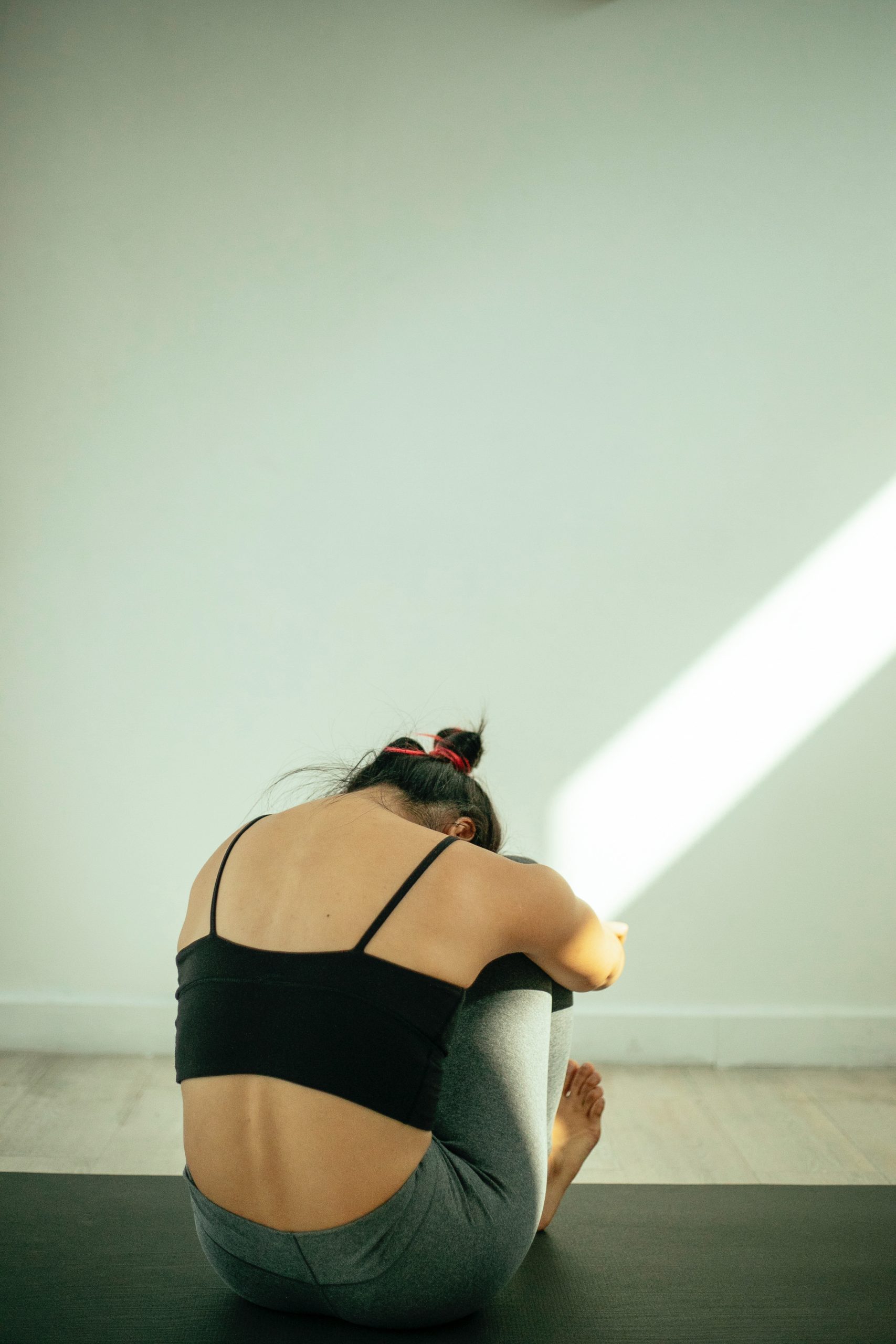
Next, flip over on your back and pull your knees toward your chest, exerting only gentle pressure. Hold for about 30 seconds and do three reps for a stretch that can alleviate bloating and back pain. In other words, you need this stretch when you have PMS.
Neck stretches
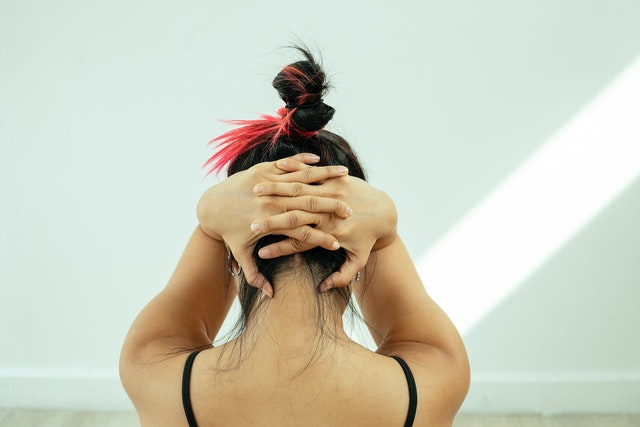
This stretch is especially important if you spend a lot of time looking at a screen or working at a computer. Over time, the muscles in the neck and shoulders become tight and tense, especially if you tend to hold stress in those areas. Sit up straight on a chair or your bed, then place your hand on top of your head and carefully press your ear toward your shoulder. Stop right away if you feel pain or discomfort. Hold for 10 seconds, then repeat for 10 reps on both sides.
Standing quad stretch
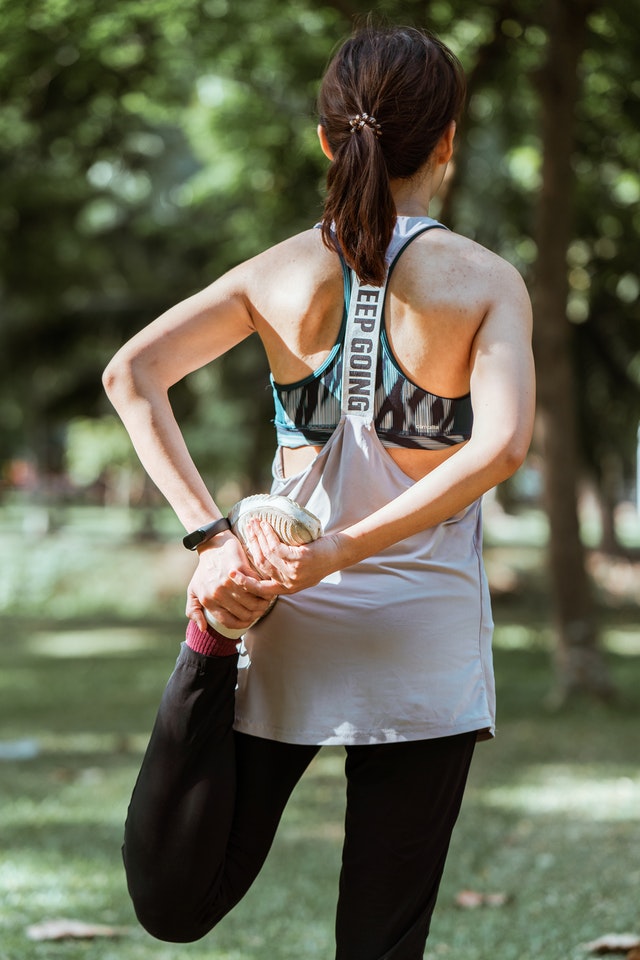
Ready to get moving? You don't have to have a run planned to stretch out your quads. Stand up and place your right hand on a solid object for balance. Bend your left knee with your heel toward your rear, then grasp your left ankle firmly with your left hand. Feel the delicious stretching sensation as you hold for about 30 seconds with three reps on each side.
Toe touch
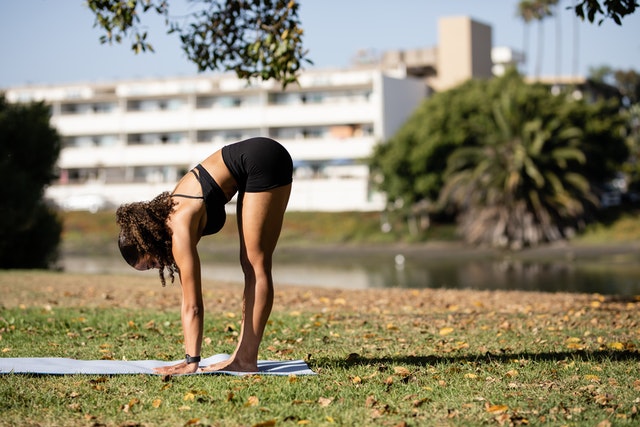
Also known as a standing forward bend, this stretch has a spot in your regimen long past middle school gym class. It helps your internal organs work efficiently while reducing feelings of stress and anxiety.
Start this stretch in mountain pose, a yoga position in which you stand up straight with hands at your sides, palms facing out. As you inhale, sweep your hands out and up, then draw them together over your head. Try to keep the length in your spine as you fold your body in half at the hips, hands on your legs or on the floor. Hold the stretch for five deep breaths.
You'll feel alert and energized with these stretches, but that's not their only benefit. Over time, a regular stretching routine can reduce stress and improve mobility and flexibility. Best of all, these stretches put you in the right mindset to make the most of your day.


